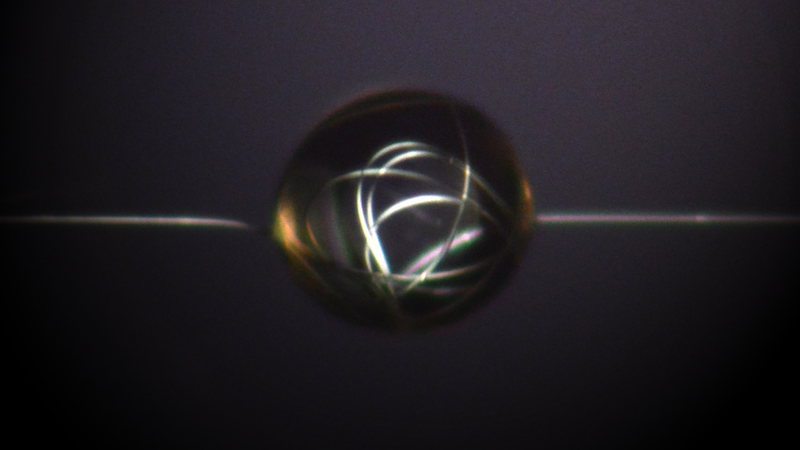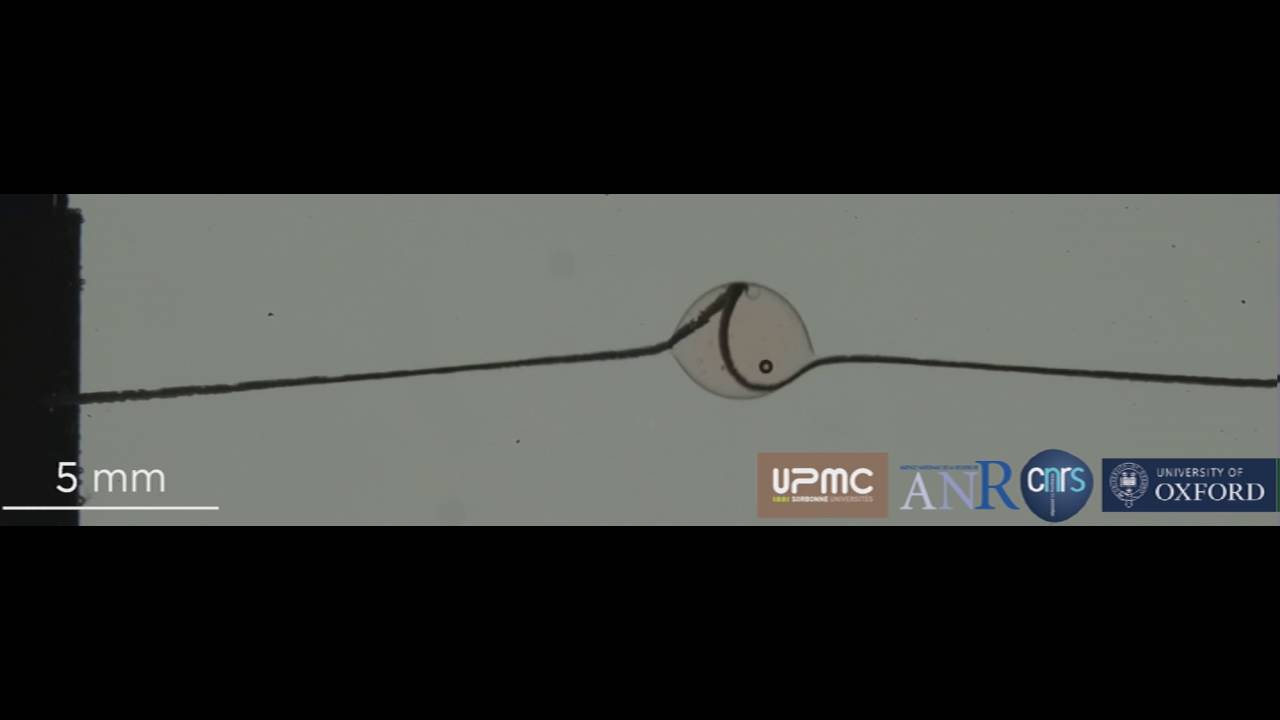
Scientists for many years did not give rest a question: why the web does not SAG after it is very much stretched and loosened again? Many researchers tried to recreate the material with such properties in the laboratory, but none worked. And finally, scientists from Oxford University have solved the mystery of the spider network. Moreover, they even managed to develop fibers whose properties resemble cobwebs.
The secret of the unusual properties of the web lies in the fact that its filaments are covered with tiny drops of watery glue, playing the role of “coils of the winding system”. They constantly tighten the web, providing it with the necessary tension and elasticity. Carefully examining this mechanism, scientists from Oxford University and Marie Curie used it in a lab environment and created synthetic spider webs. In the video below you can see how thin the plastic filament is twisted with the help of a tiny drop of oil and just as quickly unwound, remaining taut along its entire length.

The head of the team of researchers Dr. Herve Elettro claims that synthetic web that scientists among themselves referred to as “liquid wires”, you will find the widest application in various fields. For example, the web can be used to create a reversing of the micromotor and various elastic systems. This fiber web can be produced from virtually any materials, making its production very affordable.
Spiders have inspired scientists to create a “liquid wire”
Sergey Grey
